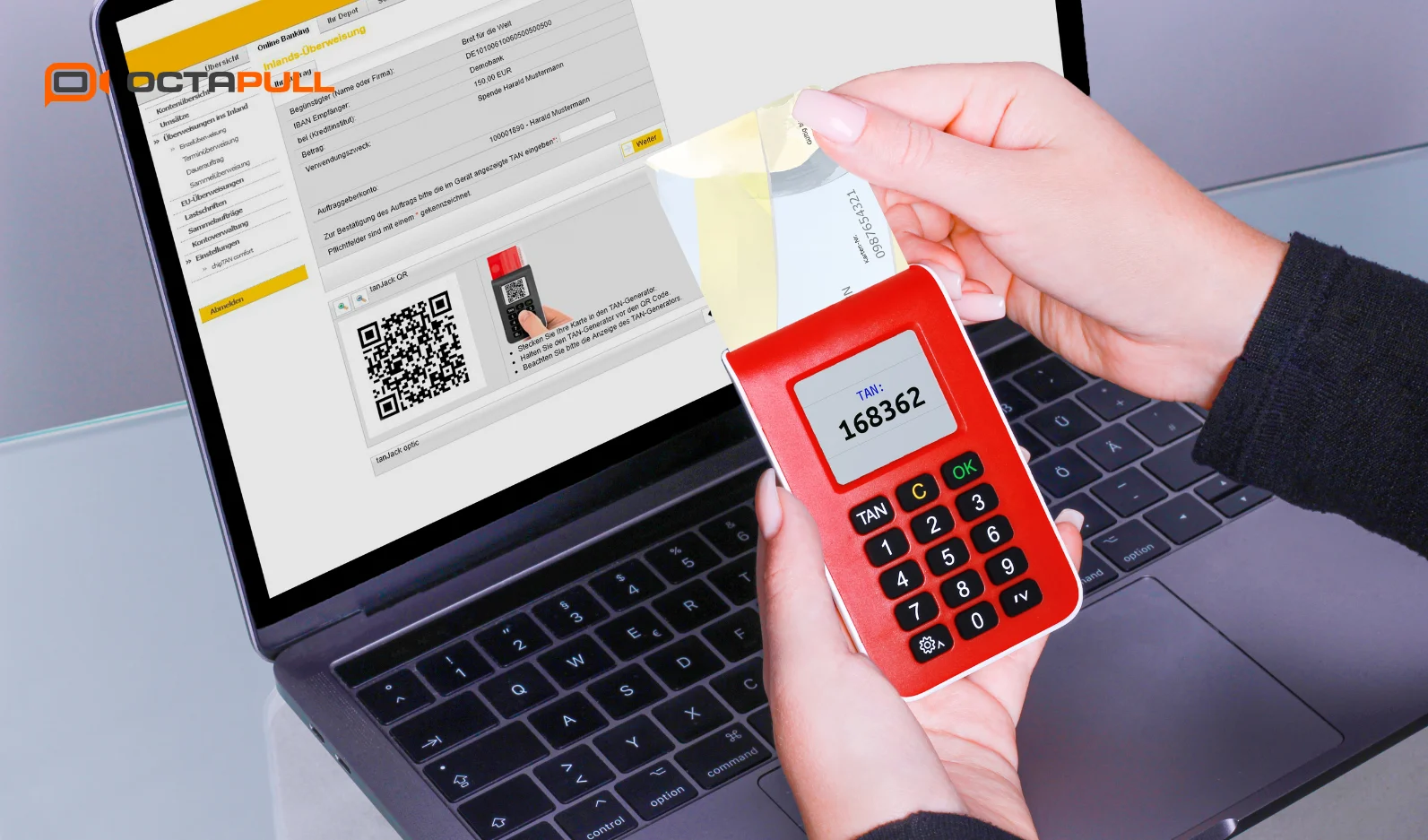The systems behind B2B payments are evolving quickly. Real-time expectations, digital-native buyers, and shifting from static invoicing to integrated ecosystems have pushed payments into a more strategic role.
What was once a back-office task now influences how businesses operate and grow.
In this article, we will explore the future of B2B payments by examining the trends changing how companies send, receive, and manage money.
From embedded finance to AI-driven reconciliation and flexible credit tools, these developments mark a clear change in how business value flows across networks.
How the Future of B2B Payments Took Shape 
For decades, B2B payments relied on paper checks, manual invoicing, and delayed reconciliations. Processes were fragmented and largely isolated from the broader digital transformation happening across industries.
The shift began slowly. First with digitized invoices, then with online portals. But the real momentum came with API-driven platforms that enabled real-time data exchange between finance systems.
This shift didn’t just improve speed. It changed expectations. Businesses now demand more transparency, automation, and flexibility from their payment systems.
The rise of cloud-native ERPs, global supplier networks, and recurring revenue models has redefined how money moves between companies.
These changes laid the foundation for what we now call the future of B2B payments—an ecosystem where payments are no longer back-office tasks, but integrated components of strategic decision-making.
Emerging Trends Shaping B2B Payments in 2025
As businesses adopt faster, more connected systems, payment processes are following suit. The expectations have shifted—speed, visibility, and flexibility are no longer optional.
These are now baseline requirements in a world where B2B payments must match the pace of everything else digital.
The following trends represent not only innovation but structural changes in how payments are integrated, executed, and optimized across organizations.
Each one reflects a different angle of the ongoing digital transformation in B2B payments, and together they define what will shape the landscape in the years ahead.
1. Embedded Finance: Turning Transactions into Invisible Workflows
Embedded finance enables payment functionality to live directly within the platforms businesses already use, such as ERPs, procurement software, and invoicing tools.
Instead of switching between systems, users can issue, collect, and reconcile payments without leaving their operational environment. This streamlines execution and strengthens the link between financial activity and core workflows.
For businesses, this shift means more than convenience. It’s about creating end-to-end processes that reduce friction and improve control. As part of broader B2B payment trends for 2025, embedded finance lays the groundwork for real-time financial interactions across partners, departments, and systems.
2. AI-Powered Reconciliation: Smarter, Faster, Leaner
Reconciling payments used to require human oversight at every step—matching invoices to bank statements, flagging inconsistencies, closing gaps. AI now handles much of this automatically.
Algorithms trained on transaction histories can classify entries, detect anomalies, and match payments to records in seconds.
This isn’t just about speed. It’s about accuracy, cost savings, and freeing up finance teams for more strategic work. As businesses look for future-ready payment solutions, AI-powered reconciliation stands out as a core enabler of scale and efficiency in finance operations.
3. Real-Time Cross-Border Payments Become the Standard
Global B2B transactions have long suffered from delays, hidden fees, and inconsistent processing times. Traditional systems weren’t built for the instant movement of funds across jurisdictions.
But real-time cross-border payments are changing that dynamic, making it possible to clear and settle payments across borders almost as fast as domestic ones.
This shift has broad implications: less working capital locked in transit, improved supplier relationships, and better liquidity planning. As real-time infrastructure gains adoption, this trend is no longer a future ideal—it’s a current expectation.
For companies navigating international operations, this marks a pivotal point in the digital transformation in B2B payments.
4. Blockchain & Smart Contracts: Trust, but Automate
Blockchain technology is often associated with cryptocurrencies, but its real value in B2B lies in transparency and automation. With blockchain-backed systems, transaction records are immutable, time-stamped, and accessible to all parties involved.
When paired with smart contracts, this infrastructure allows for automatic execution of agreements, triggering payments once predefined conditions are met.
This significantly reduces the need for manual verification or legal back-and-forth. It builds trust without adding overhead.
In the context of B2B payment trends 2025, blockchain and smart contracts represent a move toward leaner, safer, and self-regulating financial ecosystems.
5. BNPL for B2B: Flexible Terms, Scalable Growth
Buy Now, Pay Later has already reshaped consumer payments—but its B2B counterpart is gaining traction fast. Vendors now offer flexible financing options at the point of purchase, allowing buyers to extend payment terms while still processing transactions instantly.
This benefits both sides: buyers improve cash flow, and sellers secure revenue upfront.
BNPL in B2B isn’t just a convenience—it’s a financing strategy. As businesses look for ways to reduce friction in procurement and build more agile operations, BNPL becomes a competitive advantage.
Among the most relevant future of B2B payments, it demonstrates how embedded credit models can support long-term growth.
6. Invoice Financing Platforms: Working-Capital on Tap
For many companies, unpaid invoices tie up significant working capital. Traditional financing methods often fall short, especially when access to credit is slow, collateral-heavy, or rigid.
Invoice financing platforms offer a modern solution, allowing businesses to unlock funds by advancing payment against approved receivables.
The benefit is twofold: it improves cash flow without incurring debt and aligns financing directly with real business activity.
As B2B payment trends for 2025 evolve, these platforms are becoming a core part of short-term liquidity strategy, especially for businesses scaling rapidly or managing extended payment cycles.
7. Supplier Self-Service Portals: Let Vendors Drive the Payment Bus
Managing vendor payments manually often leads to bottlenecks, miscommunication, and late disbursements. Supplier self-service portals change this equation.
By giving vendors visibility into payment status, invoice timelines, and account details, these platforms reduce dependency on back-office teams and increase satisfaction across the supply chain.
This model decentralizes control in a smart way—it allows vendors to own their side of the transaction process while companies retain overall visibility.
In a world driven by automation and integration, this is a natural step in creating future-ready payment solutions that scale with complexity instead of breaking under it.
How Octapull B2B Builds a Future-Ready Payment Stack 
As payment expectations rise across supply chains, companies need more than isolated upgrades. They need systems that connect—not just internally, but across their entire partner ecosystem.
Octapull B2B delivers this by aligning key payment capabilities with modern operational demands: integration, automation, and real-time visibility.
Its unified platform supports dynamic payment flows while reducing the friction between sales, finance, and fulfillment. The result is a B2B payment infrastructure that keeps pace with evolving business models—agile, transparent, and built to scale.
Modern Payment Integrations: Pay How Your Customers Want
In B2B transactions, payment preferences vary widely—some partners require credit card payments, others rely on bank transfers, or region-specific methods.
Octapull B2B supports this diversity through integrations with modern payment gateways, giving businesses the flexibility to accept and process payments through the methods their customers already use.
This reduces payment friction, speeds up cash collection, and increases customer satisfaction. For companies operating across markets, this flexibility isn’t optional—it’s foundational. Octapull B2B’s payment integrations are designed to adapt, not dictate.
Seamless ERP Sync: Kill the Double Data Entry
Manual data duplication across systems is one of the biggest inefficiencies in B2B finance operations.
With Octapull B2B, payment records, invoices, and account updates sync directly with existing ERP systems, eliminating redundant data entry and reducing the risk of errors.
This seamless integration ensures that financial and operational data always reflect the same reality. It frees up finance teams to focus on analysis and forecasting instead of chasing inconsistencies. In a fast-moving environment, this kind of sync is not just helpful—it’s critical.
Real-Time Analytics Dashboards: Cash-Flow in HD
Seeing payment status in real time is no longer a luxury. Octapull B2B’s analytics dashboards provide live visibility into receivables, outstanding invoices, and cash-flow projections. This empowers decision-makers to act faster and with more confidence.
The dashboards are not just visual layers—they pull data from the entire payment stack, turning raw transactions into actionable insights. In a world where timing drives outcomes, real-time visibility is one of the most valuable features a payment system can offer.
Powering the Future of B2B Payments with Octapull B2B
The trends shaping the future of B2B payments—real-time systems, embedded tools, AI reconciliation, blockchain-backed trust—are no longer experimental. Their expectations.
Businesses that want to stay competitive need infrastructure that supports speed, transparency, and interoperability at scale.
Octapull B2B brings these elements together. From modern gateway integrations to ERP sync and real-time analytics, it offers a unified stack that aligns with how payments are executed in today’s business environments.
More importantly, it does so without disrupting what already works.
The transition to smarter, faster B2B payments doesn’t require reinventing your finance operations. But it does require the right foundation. Octapull B2B helps you build it. Ready to see what that looks like in action?
You can schedule a demo meeting with our product team or visit our contact page to explore how Octapull B2B can elevate your business!

